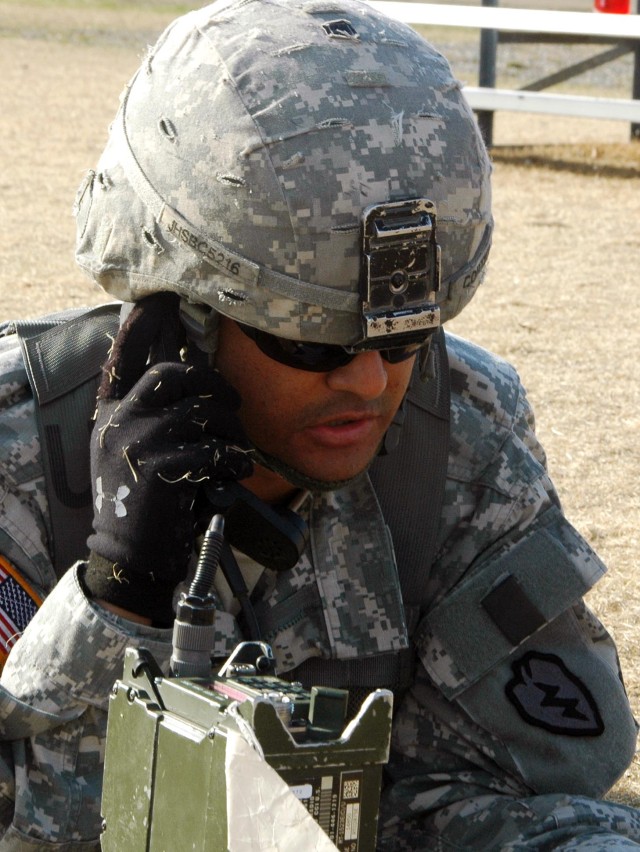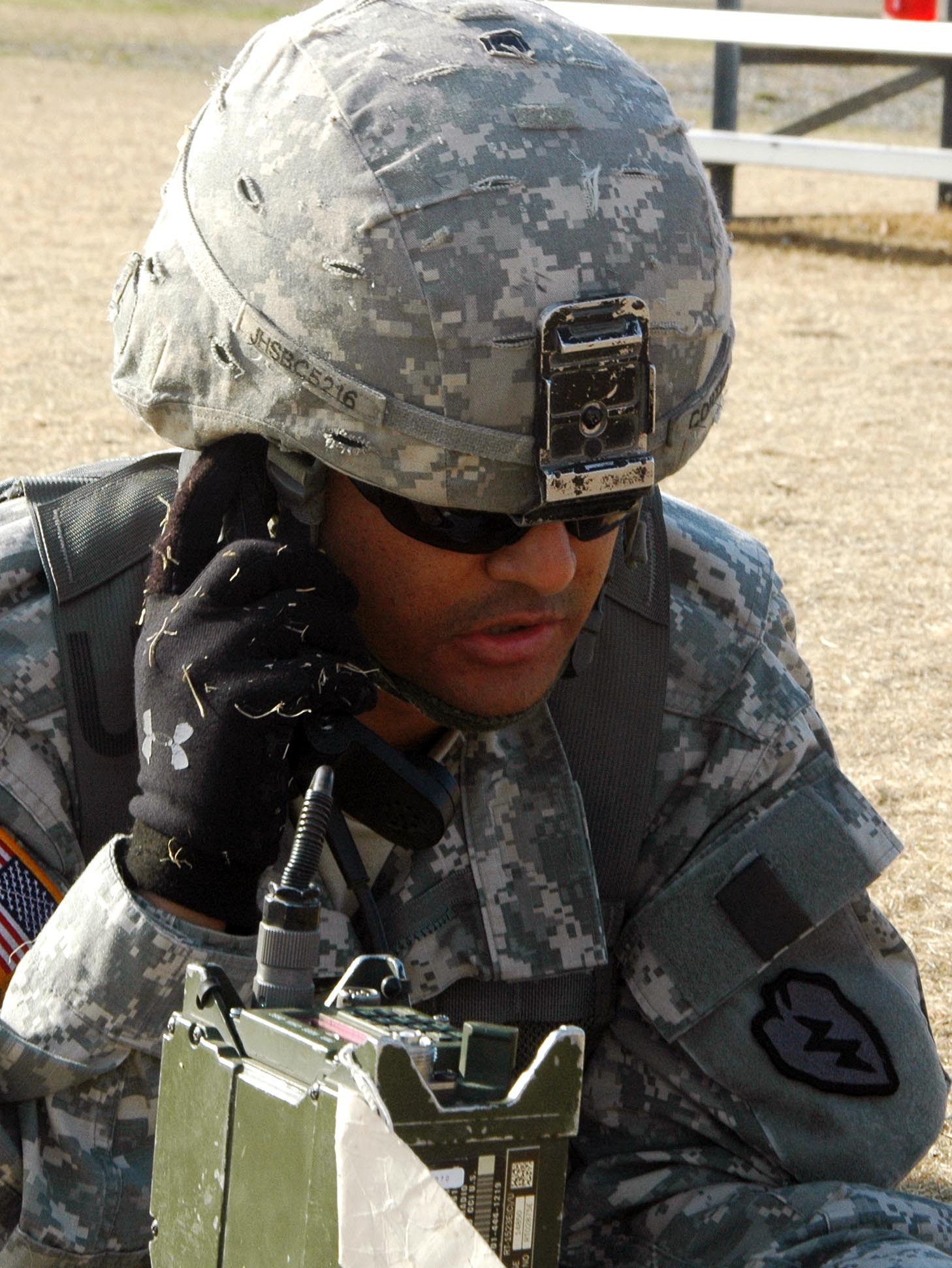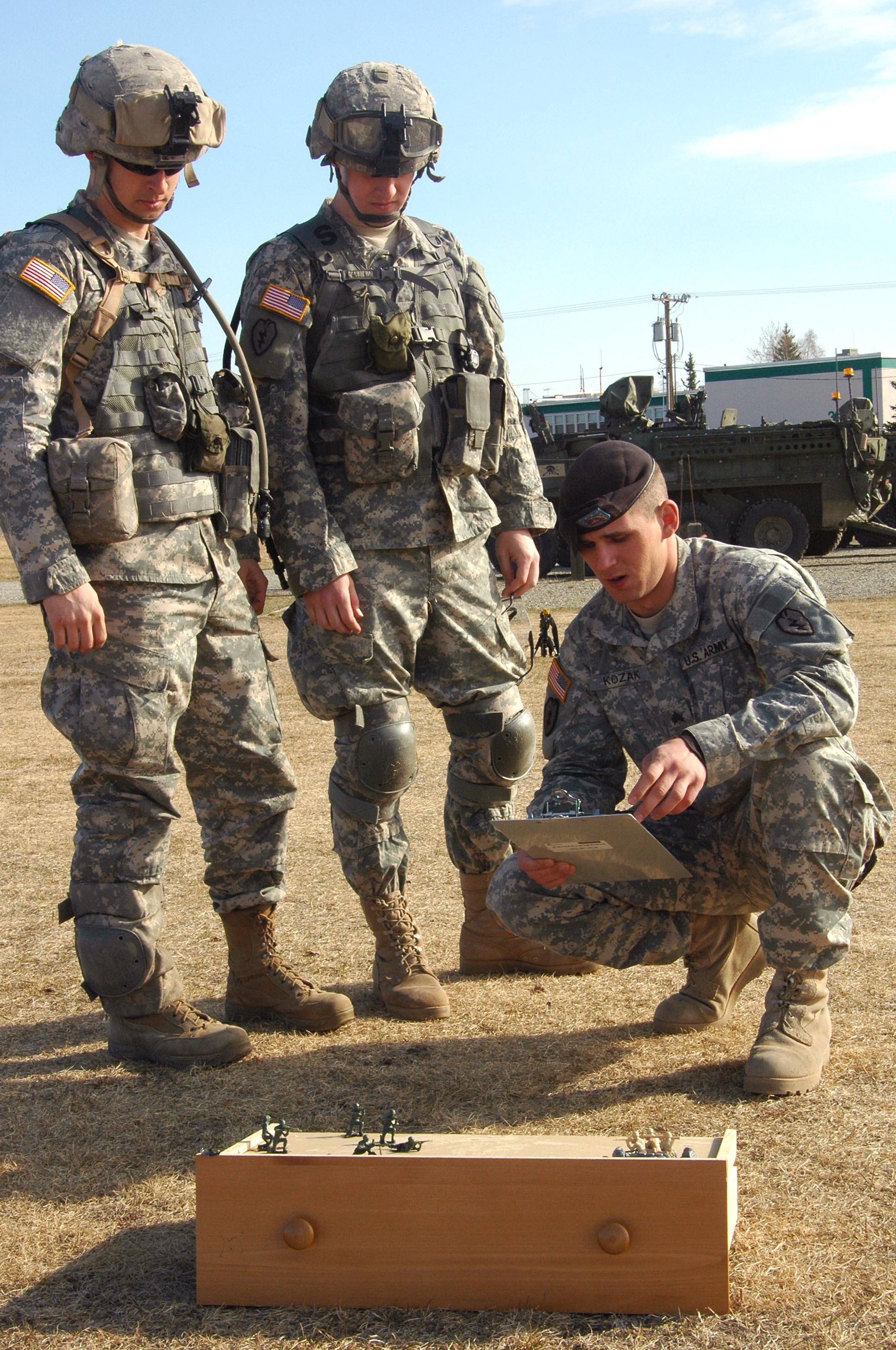For an infantryman, the Expert Infantry Badge is the gold-medal standard.
The prestigious badge, offered only to infantry and Special Forces Soldiers, represents excellence in a variety of soldiering tasks from land navigation and proficiency with weapons systems to first aid, operating communications systems, a 12-mile road march and more.
Soldiers from 1st Stryker Brigade, 25th Infantry Division have spent the last few weeks training and preparing for the brigade's first EIB testing in several years, and 435 candidates arrived at the Donnelly Training Area at Fort Greely Monday to test and take up the EIB mantle as a new generation of expert infantryman.
"The EIB is a goal that every infantryman should attain," said Staff Sgt. Giles Hawthorn, A Company, 3rd Battalion, 21st Infantry Regiment, 1-25th SBCT. "It's a mark of excellence within the infantry corps. It encompasses all the skills that an infantryman needs to not only better himself and accomplish the mission, but also train his Soldiers in the future."
While the Army's operations tempo over the past nine years has meant more chances that Soldiers will earn Combat Infantry Badges, awarded for participation in combat, it has also translated into fewer opportunities for units to facilitate EIB testing since their time in garrison has diminished.
"Before all the deployments, it seemed like everyone had this badge. But now, since the deployments (began), it's a lot harder to get," said 1st Lt. Carlo Cappella, B Company, 1st Battalion, 24th Infantry Regiment, 1-25th SBCT.
Recently revamped, new EIB testing standards include three lanes - patrol, urban operations and traffic control point - with 10 tasks per lane. The testing changes represent a shift to more outcome-based testing, Cappella said.
"In the last couple of years there has been a transition from the old EIB standard to a new standard with testing," he said. While details like hand positions and "by the numbers" standards were often the focus in the past, Cappella, who earned his EIB during his prior enlisted service, said the new standards look at whether a Soldier accomplished the mission, not necessarily how they do it. "What is the end result of you going through this lane' Did you accomplish the mission still' Did you do the process right' That's what we're going for now. It's outcome-based and making sure that the end results in mission success," he said.
Soldiers from each infantry battalion, 5th Squadron, 1st Cavalry Regiment, and D Company, 52nd Infantry Regiment (Anti-Tank) trained at various locations throughout the installation, determined that their Soldiers would be ready for this week's EIB challenge.
Land navigation is one of the most challenging events and often trips up EIB candidates. Hawthorn, who served as a cadre member for 3-21st EIB training and helped run the battalion's training at Fort Wainwright's land navigation course, said land navigation is a perishable skill so the battalion's refresher training was crucial. "If they don't do it all the time, they will forget how to do it," he said. "So what this is designed to do is to hone their skills and provide them with the skills necessary to get a 'go' in land navigation and get their EIB down at [Fort] Greely."
Soldiers trained with the same standard they encountered during the EIB testing - finding at least three out of five points in three hours. EIB land navigation testing includes locating and plotting points on a map and then using navigation skills to find the physical point during day and night conditions and various types of terrain.
"It's not beyond any Soldier to do this," Hawthorn said. "But it definitely takes mental toughness and perseverance to do it because it's a stressful time. Doing the train-up for this day-to-day back in the unit is one thing, but when the spotlight is on you and you're being graded, that makes it a little different. That's when your mental toughness comes in and you have to dig deep and think clearly and just make sure you are doing everything to standard and that you are doing the best you possibly can."
Many of the tasks are combined with others to mimic realistic, combat scenarios. "This is your bread and butter (in combat)," said Spc. Scott McCreary, A Company, 1st Battalion, 5th Infantry Regiment, 1-25th SBCT, who ran an EIB battalion training event on the patrol lane combining three tasks including searching detainees for weapons. "You want to learn this to the full extent because that's going to be your life if you miss something - a grenade or something else."
It's a different Army now, said Sgt. 1st Class Daniel Blalock, Headquarters and Headquarters Company, 1-5th, 1-25th SBCT. "I used to do (EIB) twice a year," he said.
In today's world of frequent deployments, EIB testing is not as common as it used to be, so Soldiers should take advantage of the opportunity to earn the coveted badge, Hawthorn said.
"It's not an event that is really too frequent so when the opportunity comes around for a Soldier to earn his EIB, he should give 110 percent each time and try to get a 'go' on all the tasks," he said.
Many 1-25th SBCT Soldiers will no doubt have the opportunity to earn CIBs sometime in the not-too-distant future, but this EIB testing period might be their only shot for several years, raising the prestige and importance of this round of testing.
"It used to be that there was nobody with CIBs, but now there's nobody with EIBs," said Sgt. Maj. Michael Darbison, 1-5th operations sergeant major. "So now the EIB is the new chic."




Social Sharing